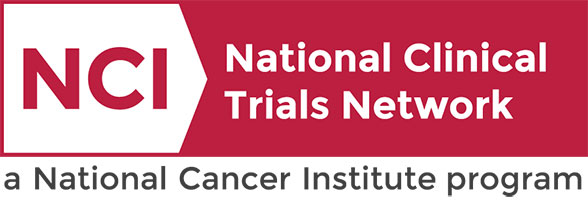Patient Search
 |
 |
|
KaCrole Higgins was diagnosed with breast cancer in 2020. “In May 2020, I found a lump in my breast. I cried. By June, it was diagnosed as breast cancer, triple positive, stage 1A. While getting this cancer diagnosis was devastating, it also became an opportunity. Suddenly, the cancer gave me clarity. It gave me clarity about what was important, what was good in my life, what was toxic in my life, and what I needed to do.” Click below to read more of KaCrole’s story |
If Landon Ryan had been diagnosed with bilateral retinoblastoma 10, 20 or 30 years ago, she might not be here today with nearly perfect vision.Thanks to recent improvements in the treatment for this rare form of cancer that almost exclusively affects children under the age of 5, the diagnosis had the power to change Landon’s life when she was 11 months old, but not to take it — or her eyesight. Click below to learn more about Landon and her story. https://momentum.vicc.org/2022/04/brighter-outlook/ |
A Study of Treatment for Medulloblastoma Using Sodium Thiosulfate to Reduce Hearing Loss
This phase III trial tests two hypotheses in patients with low-risk and average-risk medulloblastoma. Medulloblastoma is a type of cancer that occurs in the back of the brain. The term, risk, refers to the chance of the cancer coming back after treatment. Subjects with low-risk medulloblastoma typically have a lower chance of the cancer coming back than subjects with average-risk medulloblastoma. Although treatment for newly diagnosed average-risk and low-risk medulloblastoma is generally effective at treating the cancer, there are still concerns about the side effects of such treatment. Side effects or unintended health conditions that arise due to treatment include learning difficulties, hearing loss or other issues in performing daily activities. Standard therapy for newly diagnosed average-risk or low-risk medulloblastoma includes surgery, radiation therapy, and chemotherapy (including cisplatin). Cisplatin may cause hearing loss as a side effect. In the average-risk medulloblastoma patients, this trial tests whether the addition of sodium thiosulfate (STS) to standard of care chemotherapy and radiation therapy reduces hearing loss. Previous studies with STS have shown that it may help reduce or prevent hearing loss caused by cisplatin. In the low-risk medulloblastoma patients, the study tests whether a less intense therapy (reduced radiation) can provide the same benefits as the more intense therapy. The less intense therapy may cause fewer side effects. Radiation therapy uses high energy x-rays to kill tumor cells and shrink tumors. Cisplatin is in a class of medications known as platinum-containing compounds. It works by killing, stopping or slowing the growth of cancer cells. The overall goals of this study are to see if giving STS along with standard treatment (radiation therapy and chemotherapy) will reduce hearing loss in medulloblastoma patients and to compare the overall outcome of patients with medulloblastoma treated with STS to patients treated without STS on a previous study in order to make sure that survival and recurrence of tumor is not worsened.
Not Available
III
Not Available
NCT05382338
VICC-NTPED23124
A Global Study of Volrustomig (MEDI5752) for Participants With Unresected Locally Advanced Head and Neck Squamous Cell Carcinoma Following Definitive Concurrent Chemoradiotherapy
The main purpose of this study is to assess the efficacy and safety of volrustomig compared to observation in participants with unresected locally advanced head and neck squamous cell carcinoma (LA-HNSCC) who have not progressed after receiving definitive concurrent chemoradiotherapy (cCRT).
Not Available
III
Choe, Jennifer
NCT06129864
VICC-DTHAN24071
Surgery With or Without Neoadjuvant Chemotherapy in High Risk RetroPeritoneal Sarcoma
Sarcoma
Sarcoma
This is a multicenter, randomized, open label phase lll trial to assess whether preoperative chemotherapy, as an adjunct to curative-intent surgery, improves the prognosis of high risk DDLPS (dedifferentiated Liposarcoma) and LMS (Leiomyosarcoma) patients as measured by disease free survival.
After confirmation of eligibility criteria, patients will be randomized to either the standard arm or experimental arm.
After confirmation of eligibility criteria, patients will be randomized to either the standard arm or experimental arm.
Sarcoma
III
Davis, Elizabeth
NCT04031677
ECOGSAREA7211
A Study of Elacestrant Versus Standard Endocrine Therapy in Women and Men With ER+,HER2-, Early Breast Cancer With High Risk of Recurrence
Breast
Breast
The primary goal of this study is to evaluate the effectiveness of elacestrant versus standard endocrine therapy in participants with node-positive, Estrogen Receptor-positive (ER+), Human Epidermal Growth Factor-2 negative (HER2-) early breast cancer with high risk of recurrence.
Breast
III
Abramson, Vandana
NCT06492616
VICC-DTBRE24171
Testing the Addition of Total Ablative Therapy to Usual Systemic Therapy Treatment for Limited Metastatic Colorectal Cancer, The ERASur Study
This phase III trial compares total ablative therapy and usual systemic therapy to usual systemic therapy alone in treating patients with colorectal cancer that has spread to up to 4 body sites (limited metastatic). The usual approach for patients who are not participating in a study is treatment with intravenous (IV) (through a vein) and/or oral medications (systemic therapy) to help stop the cancer sites from getting larger and the spread of the cancer to additional body sites. Ablative means that the intention of the local treatment is to eliminate the cancer at that metastatic site. The ablative local therapy will consist of very focused, intensive radiotherapy called stereotactic ablative radiotherapy (SABR) with or without surgical resection and/or microwave ablation, which is a procedure where a needle is temporarily inserted in the tumor and heat is used to destroy the cancer cells. SABR, surgical resection, and microwave ablation have been tested for safety, but it is not scientifically proven that the addition of these treatments are beneficial for your stage of cancer. The addition of ablative local therapy to all known metastatic sites to the usual approach of systemic therapy could shrink or remove the tumor(s) or prevent the tumor(s) from returning.
Not Available
III
Not Available
NCT05673148
VICC-NTGIT23268
A Study of TAR-200 Versus Intravesical Chemotherapy in Participants With Recurrent High-Risk Non-Muscle-Invasive Bladder Cancer (HR-NMIBC) After Bacillus Calmette-Gurin (BCG)
Bladder
Bladder
The purpose of this study is to compare disease free survival (DFS) in participants with recurrence of papillary-only high-risk non-muscle-invasive bladder cancer (HR-NMIBC) within 1 year of last dose of Bacillus Calmette-Gurin (BCG) therapy and who refused or are unfit for Radical Cystectomy (RC), receiving TAR-200 versus investigator's choice of single agent intravesical chemotherapy.
Bladder
III
Luckenbaugh, Amy
NCT06211764
VICC-DDURO24103
Pembrolizumab vs. Observation in People With Triple-negative Breast Cancer Who Had a Pathologic Complete Response After Chemotherapy Plus Pembrolizumab
Breast
Breast
The phase III trial compares the effect of pembrolizumab to observation for the treatment of patients with early-stage triple-negative breast cancer who achieved a pathologic complete response after preoperative chemotherapy in combination with pembrolizumab. Immunotherapy with monoclonal antibodies, such as pembrolizumab, may help the body's immune system attack the cancer, and may interfere with the ability of tumor cells to grow and spread. This trial may help researchers determine if observation will result in the same risk of cancer coming back as pembrolizumab after surgery in triple-negative breast cancer patients who achieve pathologic complete response after preoperative chemotherapy with pembrolizumab.
Breast
III
Abramson, Vandana
NCT05812807
VICC-NTBRE23357
A Study to Compare Standard Therapy to Treat Hodgkin Lymphoma to the Use of Two Drugs, Brentuximab Vedotin and Nivolumab
Multiple Cancer Types
This phase III trial compares the effect of adding immunotherapy (brentuximab vedotin and nivolumab) to standard treatment (chemotherapy with or without radiation) to the standard treatment alone in improving survival in patients with stage I and II classical Hodgkin lymphoma. Brentuximab vedotin is in a class of medications called antibody-drug conjugates. It is made of a monoclonal antibody called brentuximab that is linked to a cytotoxic agent called vedotin. Brentuximab attaches to CD30 positive lymphoma cells in a targeted way and delivers vedotin to kill them. A monoclonal antibody is a type of protein that can bind to certain targets in the body, such as molecules that cause the body to make an immune response (antigens). Immunotherapy with monoclonal antibodies, such as nivolumab, may help the body's immune system attack the cancer, and may interfere with the ability of tumor cells to grow and spread. Chemotherapy drugs such as doxorubicin hydrochloride, bleomycin sulfate, vinblastine sulfate, dacarbazine, and procarbazine hydrochloride work in different ways to stop the growth of cancer cells, either by killing the cells, by stopping them from dividing, or by stopping them from spreading. Cyclophosphamide is in a class of medications called alkylating agents. It works by damaging the cell's deoxyribonucleic acid (DNA) and may kill cancer cells. It may also lower the body's immune response. Etoposide is in a class of medications known as podophyllotoxin derivatives. It blocks a certain enzyme needed for cell division and DNA repair and may kill cancer cells. Vincristine is in a class of medications called vinca alkaloids. It works by stopping cancer cells from growing and dividing and may kill them. Prednisone is in a class of medications called corticosteroids. It is used to reduce inflammation and lower the body's immune response to help lessen the side effects of chemotherapy drugs. Radiation therapy uses high energy x-rays to kill tumor cells and shrink tumors. Adding immunotherapy to the standard treatment of chemotherapy with or without radiation may increase survival and/or fewer short-term or long-term side effects in patients with classical Hodgkin lymphoma compared to the standard treatment alone.
Pediatric Lymphoma,
Pediatrics
III
Smith, Christine
NCT05675410
VICC-NTPED23306
Study of Navtemadlin add-on to Ruxolitinib in JAK Inhibitor-Nave Patients With Myelofibrosis Who Have a Suboptimal Response to Ruxolitinib
Hematologic
Hematologic
This clinical trial is evaluating whether addition of navtemadlin to ruxolitinib treatment will provide more clinical benefit than ruxolitinib alone for patients with Myelofibrosis who have a suboptimal response to ruxolitinib treatment alone.
Subjects will start by receiving ruxolitinib alone in the run-in period. Those who demostrate a suboptimal response from ruxolitinib alone will then be randomized 2:1 to receive navtemadlin or navtemadlin placebo as add-on treatment to their ongoing ruxolitinib. Randomized means that subjects will be assigned to a group by chance, like a flip of a coin. The study is blinded, meaning the subjects, doctors, central endpoint assessors and sponsor will not know which add on treatment (navtemadlin or navtemadlin placebo) the subject is receiving.
Subjects will start by receiving ruxolitinib alone in the run-in period. Those who demostrate a suboptimal response from ruxolitinib alone will then be randomized 2:1 to receive navtemadlin or navtemadlin placebo as add-on treatment to their ongoing ruxolitinib. Randomized means that subjects will be assigned to a group by chance, like a flip of a coin. The study is blinded, meaning the subjects, doctors, central endpoint assessors and sponsor will not know which add on treatment (navtemadlin or navtemadlin placebo) the subject is receiving.
Hematologic
III
Mohan, Sanjay
NCT06479135
VICC-DTHEM24136
Study Assessing Activity of Intravenous (IV) Etentamig Monotherapy Versus Standard Available Therapies in Adult Participants With Relapsed or Refractory Multiple Myeloma
Multiple myeloma (MM) is a cancer of the blood's plasma cells. The cancer is typically found in the bones and bone marrow (the spongy tissue inside of the bones) and can cause bone pain, fractures, infections, weaker bones, and kidney failure. Treatments are available, but MM can come back (relapsed) or may not get better (refractory) with treatment. This is a study to determine change in disease symptoms of etentamig compared to standard available therapies in adult participants with relapsed/refractory (R/R) MM.
Etentamig is an investigational drug being developed for the treatment of R/R MM. This study is broken into 2 Arms; Arm A and Arm B. In Arm A, participants will receive etentamig as a monotherapy. In Arm B, participants will receive the standard available therapy (SAT) identified by the Investigator during screening, in accordance with the local (or applicable) approved label, package insert, summary of product characteristics, and/or the institutional guidelines, as applicable. Around 380 adult participants with relapsed/refractory multiple myeloma will be enrolled at approximately 140 sites across the world.
In Arm A participants will receive etentamig as an infusion into the vein in 28 day cycles, during the 3.5 year study duration. In Arm B, participants will receive the SAT identified by the Investigator during screening, in accordance with the local (or applicable) approved label, package insert, summary of product characteristics, and/or the institutional guidelines, as applicable, during the 3.5 year study duration.
There may be higher treatment burden for participants in this trial compared to their standard of care. Participants will attend regular visits during the study at a hospital or clinic. The effect of the treatment will be checked by medical assessments, blood tests, checking for side effects and questionnaires.
Etentamig is an investigational drug being developed for the treatment of R/R MM. This study is broken into 2 Arms; Arm A and Arm B. In Arm A, participants will receive etentamig as a monotherapy. In Arm B, participants will receive the standard available therapy (SAT) identified by the Investigator during screening, in accordance with the local (or applicable) approved label, package insert, summary of product characteristics, and/or the institutional guidelines, as applicable. Around 380 adult participants with relapsed/refractory multiple myeloma will be enrolled at approximately 140 sites across the world.
In Arm A participants will receive etentamig as an infusion into the vein in 28 day cycles, during the 3.5 year study duration. In Arm B, participants will receive the SAT identified by the Investigator during screening, in accordance with the local (or applicable) approved label, package insert, summary of product characteristics, and/or the institutional guidelines, as applicable, during the 3.5 year study duration.
There may be higher treatment burden for participants in this trial compared to their standard of care. Participants will attend regular visits during the study at a hospital or clinic. The effect of the treatment will be checked by medical assessments, blood tests, checking for side effects and questionnaires.
Not Available
III
Baljevic, Muhamed
NCT06158841
VICC-DTPCL23493


